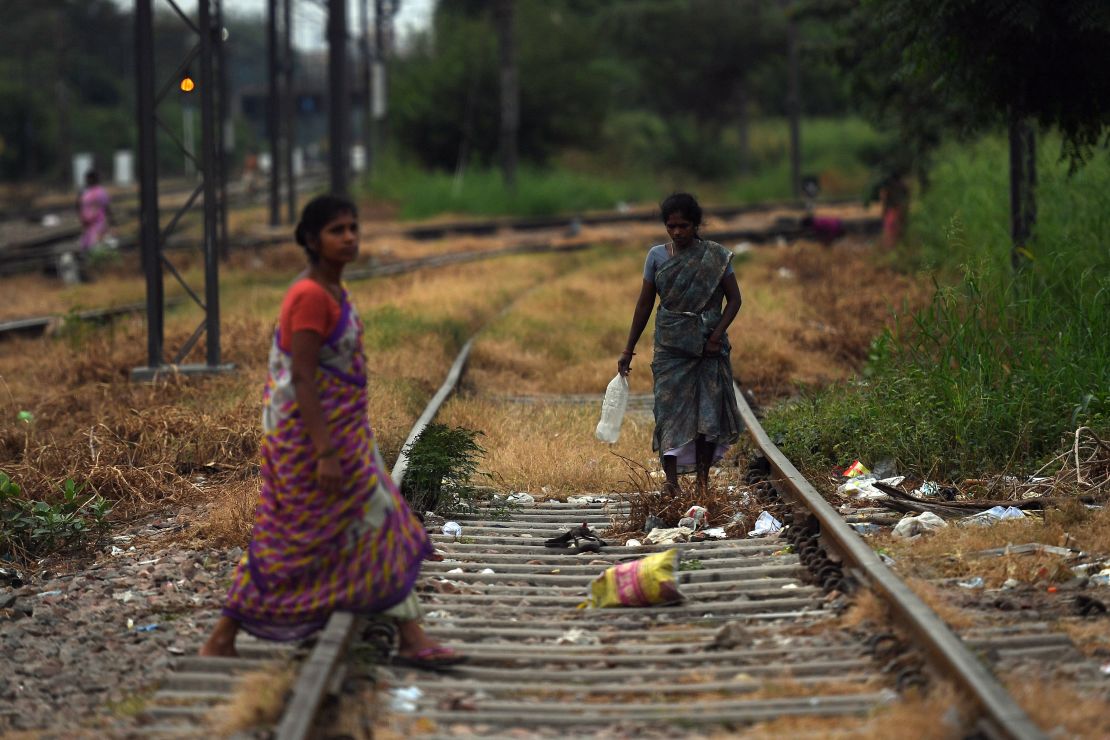It was the ambitious sanitation campaign aimed at giving almost half of India’s 1.3 billion population access to a toilet in just five years.
And last week, Indian Prime Minister Narendra Modi finally declared India free of open defecation, when people relieve themselves in fields, bushes, forests, bodies of water, or any other open spaces, rather than use a toilet.
“The world is amazed that toilets have been provided to more than 600 million people in 60 months, building more than 110 million toilets,” Modi said on Wednesday, the 150th anniversary of Indian independence icon Mahatma Gandhi’s birth. “No one was ready to believe earlier that India will become open defecation-free in such a short period of time. Now, it is a reality.”
Modi launched the project – part of his flagship Swachh Bharat (Clean India) campaign – in 2014, in an effort to eliminate public defecation by 2019. If government figures are correct, it would mark a huge achievement. But experts say the statistics are “misleading” – and that open defecation has not been eliminated in the country.
Nazar Khalid, research fellow at the Research Institute for Compassionate Economics (RICE), said the government focused too much on building toilets and failed to make sure people actually used them. The government also didn’t ensure the new toilets were properly maintained, he added, with sewage properly disposed of.
The problem
According to UNICEF, India had the highest number of people in the world – about 620 million – who defecated in the open, with the vast majority in rural areas.
Open defecation is a major public health hazard, especially for children who risk catching potentially deadly diseases like diarrhea. According to UNICEF, fecal contamination and poor sanitation is a leading cause of child mortality, disease, under nutrition and stunting. Open defecation also exposes women and girls to the danger of physical attacks and rape, and they often have to wait until dark to relieve themselves.

The World Health Organization estimated that Modi’s Clean India campaign could help prevent the deaths of 300,000 people from diarrhea and protein-energy malnutrition between 2014 and this October.
An absence of adequate toilets and water facilities, as well as a lack of awareness about proper sanitation and hygiene, were reasons why people defecated in the open. But attitudes towards defecation in India are a significant challenge in eliminating the practice, and many in rural areas consider defecating in an open space to be cleaner than having a toilet inside the home.
Is India really open defecation free?
Before the Clean India campaign started, only 39% of households had access to a toilet. Yet a World Bank-supported national survey that concluded in February found 10% of people in rural India defecated in the open – and 96% of people who had access to a toilet used it. The government now says 100% of the country has toilet coverage.
Modi said everyone in the country had contributed to the campaign’s success. Getting the public participating in Clean India has been key – Bollywood megastars and filmmakers brought the issue to Indian screens, and there were well-publicized reports of women refusing to get married unless their prospective husband’s house had a toilet.
However experts say the figures are overblown, and that many people are still living without access to a toilet – or don’t use one even if they can.
“We need to appreciate that this government has made sanitation a big priority, which has not happened in the past,” said RICE’s Khalid. “But this is such a big farce because open defecation by no means has been eliminated.”
A RICE study of households in four northern states in 2014 found 70% of rural people surveyed defecated in the open. A second survey, in late 2018, had that figure at 44%.
One problem, according to Khalid, was that the government focused on getting the villages to build toilets, but it didn’t consider facility maintenance and sewage management.
“You are supposed to not only construct latrines but also educate people on how to use them, how to maintain them and what happens with the sludge that goes inside the pit,” Khalid said.
A. Kalimuthu, project director at the WASH (Water, Sanitation & Hygiene) Institute, said: “The construction is the easy part.
“We build hundreds of toilets, but the major focus is teaching people that the toilet is not a hardware, it’s a software.”
Caste issues also remain a significant barrier to changing those attitudes. Traditionally it is the lowest caste members whose job it is to clean latrines and sewers – and they are considered “untouchable” by higher castes.
“People don’t want to handle human feces which has traditionally been reserved for a certain category of people in our society – manual scavengers,” Khalid said.
Two children from India’s lowest caste were allegedly beaten to death late last month after defecating in the open, according to authorities. The siblings, ages 12 and 10 respectively, were attacked while defecating on a public street in Bhakhedi village in central India’s Madhya Pradesh state. Defecating in that village is banned, local police deputy superintendent Viren Singh said.
Ultimately, Khalid said, open defecation “is a behavioral issue, not about access” – and focus should move to finding out whether Modi’s campaign has produced real health impacts.
“It seems very unlikely that a lot of health benefits would be achieved by being partially open defecation free,” he said.


















